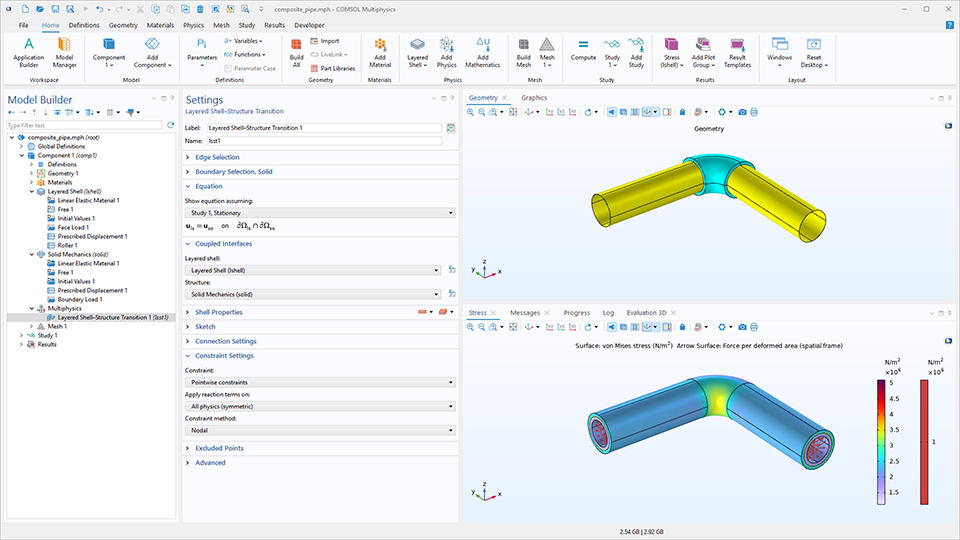Composite Materials Module Updates
For users of the Composite Materials Module, COMSOL Multiphysics® version 6.4 introduces improvements to modeling of layered shells and layered structures as well as a new tutorial model. Learn more about these updates below.
Layered Shell Interface Improvements
In version 6.4, the Layered Shell interface includes three main improvements. The rotation angle input in the Layered Material node under Global Definitions can now be defined as a variable, enabling the modeling of variable-angle tow laminates. The default plot has been updated to display the stress tensor component in the fiber direction, and two results templates now show lamina or laminate stress-tensor components instead of the von Mises stress. Additionally, the formulations for the LaRC03 and Hashin failure criteria have been improved. View these enhancements in the Parametric Study on Cross-Ply Laminate Failure tutorial model.

Improvements to the Layered Shell–Structure Transition Multiphysics Coupling
There are two main improvements to the Layered Shell–Structure Transition multiphysics coupling: The formulation for structural connections has been improved, and the default constraint method is now set to Nodal.

New Tutorial Model
COMSOL Multiphysics® version 6.4 brings a new verification model to the Composite Materials Module.
Parametric Study on Cross-Ply Laminate Failure

parametric_study_on_crossply_laminate_failure
Download from the Application Gallery
